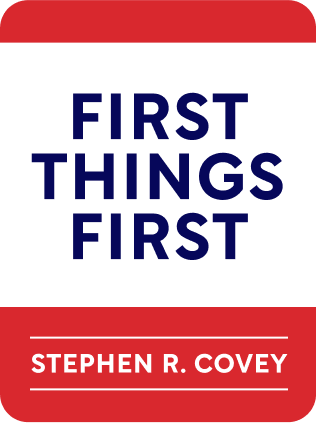

This article is an excerpt from the Shortform book guide to "First Things First" by Stephen R. Covey. Shortform has the world's best summaries and analyses of books you should be reading.
Like this article? Sign up for a free trial here .
What is the quadrant 2 time management process? How can you implement it in your daily life?
The quadrant 2 time management process is a weekly process for organizing your time based on your needs, goals, and principles. Its main aim is to maximize your time for the most meaningful quadrant 2 activities.
Keep reading for more about the quadrant 2 time management process.
What Is the Quadrant 2 Time Management Process?
The Quadrant 2 time management process is a 30-minute weekly process to organize your time based on principles, needs, and endowments in order to create quality of life.
The Quadrant 2 time management process will:
- Address your urgency addiction by helping you to prioritize important activities rather than react to urgent needs.
- Provide a framework for managing your time in a way that keeps your focus on consistently taking care of your human needs and acting on principle.
- Teach you how to translate your mission statement into your day-to-day activities and decisions.
- Allow enough flexibility for unexpected events and opportunities.
This process takes a weekly planning approach because a week provides more context than a single day. Daily planning keeps your view so limited that it only allows you to see what’s right in front of you, which can feed into an urgency paradigm, rather than allowing you to plan for what’s important.
Step 1: Identify Your Long-Term Vision and Personal Mission
The first, foundational step of the quadrant 2 time management process is to identify what’s most important to you, what gives your life meaning, and what you want to achieve in your life. This creates the context through which you’ll set and pursue your goals.
One way to clarify these priorities, or “first things,” is through a personal mission statement. This is a written document in which you outline your guiding principles and long-term goals. A personal mission statement reinforces your priorities and reminds you of them through the changing circumstances and demands of everyday life.
When writing your personal mission statement, consider the following questions:
- What are three or four “first things” that are important in your life?
- What are some of your long-term goals?
- What are the most important relationships in your life?
- What kinds of contributions do you want to make to your community, society, or the world?
- What kinds of feelings do you want to have (e.g. happiness, confidence, peace)?
- How would you spend the next seven days if you knew you had just six more months to live?
Step 2: Identify Your Roles
Everyone has different roles in life: You are a spouse, son or daughter, brother or sister, father or mother, friend, professional, and individual. Often, people struggle or feel dissatisfied when they feel they’re excelling in one or two roles at the expense of other, sometimes more important, roles.
As you set your personal mission and manage your time to work toward that mission, it’s vital that you identify and address each of your roles so that your efforts lead to a balanced life. This requires that you acknowledge that each role is not independent and isolated from the others; rather, they are all part of the whole of your identity and your life, and they work together as such. We’ll look further into roles and how to balance them in Chapter 6.
For now, make a list of the roles you have in your life. You can list them generally (e.g. family member, employee, church member) or more specifically (e.g. spouse, parent, manager, producer, deacon, parishioner). As you make your list, keep in mind that studies show that people are less effective at mentally managing more than seven categories, so try to keep the number of roles to seven or fewer.
The authors suggest including a “sharpen the saw” role, which plays off the analogy of cutting wood. We tend to become so busy “sawing” (being “productive”), that our saws (our capacities and abilities) become dull. But you can be more effective and efficient at cutting something if you take the time to sharpen your saw. By the same token, you can be more effective in all areas of your life if you attend to the four fundamental human needs we discussed in the last chapter: physical, social, mental, and spiritual. Attending to your needs is like sharpening your saw.
Step 3: Set Quadrant II Goals for Each Role
Now that you’ve identified your roles, think of Quadrant II goals for each of those roles. For the time being, limit these goals to things you can do in the next seven days. Rather than addressing urgent needs, these goals should reflect your personal mission and focus on things that would make a significant, long-term difference.
For example, in your role as a seeker of personal development, Quadrant II goals can include setting time to work on your personal mission statement. In your role as a parent, it may be scheduling some quality time with your kids. In your role at work, Quadrant II goals can include allotting time for long-term strategizing or building relationships with your customers.
Set no more than two goals for each role in the coming week; if you feel overwhelmed, you may not want to set goals for every role this week, but focus on a few roles instead.
Once you’ve written down your goals for this week, ask yourself:
- What results do you expect if you achieve all of these goals in the next week?
- If you do them all, how do you think you’ll feel about your quality of life?
- How will you feel if you only achieve some of them?
- What kind of difference would you expect to see if you did these things every week?
- How do you think doing these every week would impact your effectiveness?
Step 4: Schedule Your Quadrant II Goals
To effectively achieve your Quadrant II goals, you need a framework for making wise decisions about how you schedule and spend your time. This approach to time management has you first identify your Quadrant II goals so that you can prioritize them and prevent them from being pushed aside for more urgent Quadrant I or III matters.
Picture your weekly schedule as a jar, your Quadrant II goals as rocks, and urgent tasks as sand and gravel. If you start by filling your jar with sand and gravel, you won’t have room to fit many rocks in after. But if you start by filling it with rocks, you’ll be able to fit many more into the jar and still have room to pour in the sand and gravel — they’ll simply find space in the smaller nooks and spaces around the rocks. Similarly, if you schedule the important Quadrant II tasks into your week first, the other urgent matters will fit in around them; but if you first attend to the urgent Quadrant I and III activities, you’re likely to run out of room for your Quadrant II goals.
Take the goals you listed in Step 3 and schedule them into your week — either by assigning a specific time appointment for each goal or by writing a goal as a top priority for a given day.
Creating an appointment is often more effective because it sets time aside for working on that goal. When you make an appointment for a goal, treat it like you would an appointment with a person: Honor it, plan around it, and if it needs to be moved then reschedule it right away.
On the other hand, some goals don’t lend themselves to scheduling. For instance, if you have a goal of building your relationship with your daughter, you may need to wait for an organic opportunity to arise. List it as a priority on a given day, and if no opportunity comes up on that day, make it a priority the next day, and the next; then, when your daughter comes to you three days later asking for advice about something, you’ll be more inclined to set aside what you’re doing and devote the time to her.
Once you’ve scheduled your Quadrant II goals for this coming week, start adding in the Quadrant I tasks you need to accomplish. If you’re accustomed to an urgency paradigm, pay special attention to the urgent tasks your scheduling to ensure they are also important to you and don’t fall into Quadrant III.
As you’re doing this, be sure not to schedule every minute of each day; this method of time management requires you to maintain flexibility in your schedule for unexpected events and opportunities that will inevitably come up.
Step 5: Tackle Each Day Within the Context of Your Weekly Goals
As you move through your week, you’ll face unexpected changes in your schedule and will need to make decisions in the moment about how to proceed. The Quadrant 2 time management organizing process will help you navigate these decisions, but there are also a few things you can do to help you stay in line with your weekly goals and priorities.
1. Start each morning by reviewing what’s on your schedule for that day. This will mentally prepare you for the day, help you see that day’s activities in the context of your priorities for the week, and remind you of the underlying principles and mission that guided your scheduling.
2. As you preview the day, prioritize the tasks you have scheduled. Evaluate which are Quadrant I and Quadrant II activities; this can also help you recognize if a Quadrant III activity has made it into your schedule. You can then further prioritize each quadrant’s tasks, making sure the most important of the important tasks are completed first.
3. Go through your day’s activities and do “T planning,” indicating which of the day’s activities are time-sensitive and which aren’t. T planning (“t” for time) helps you keep time-sensitive commitments and make more informed scheduling decisions. Try listing your time-sensitive commitments on the left of a page and the commitments that can be completed at any time on the right.
Step 6: Review and Learn From Your Week
At the end of the week — before you start to make next week’s schedule — stop and consider how the week went. Did you achieve your goals? Did you face challenges? How did you handle spur-of-the-moment decisions? Did you successfully keep first things first?
Stick to Your Plan
No matter how carefully and thoughtfully you plan your week during your weekly organizing session, or review your plans and priorities for the day each morning, unexpected events and demands are bound to come up — that’s life.
The Quadrant 2 time management process is not simply about making your weekly plan and sticking to it no matter what; it’s meant to empower you to navigate those unexpected events along the way. Quadrant II organizing keeps you closely connected with your mission, endowments, and principles to empower you to live with integrity when you encounter these moments of choice.
You constantly face moments of choice, big and small, and in those situations, there are many factors that can weigh on your decision.
- Urgency
- The social mirror
- Your expectations
- Others’ expectations
- Your deep values, which reflect what’s important to you in the long term
- Your operational values, which reflect what you want in the short term
- Your conditioning
- Your self-awareness
It’s easy to blame other people or external circumstances for what happens in your life, but you always have control over how you’ll respond: You can make your choice based on conscience and self-awareness or you can make your choice according to urgency and others’ expectations.
Every small choice you make contributes to the quality of your life. Over time all those small decisions create a momentum that turns into “habits of the heart,” habits that become deeply ingrained. Those habits are the biggest factor in determining your experiences and quality of life.

———End of Preview———
Like what you just read? Read the rest of the world's best book summary and analysis of Stephen R. Covey's "First Things First" at Shortform .
Here's what you'll find in our full First Things First summary :
- How to work effectively, not just efficiently
- Why you need to think more about what you're spending time on than how much time you're spending
- The 6 steps to effectively schedule and prioritize important activities






